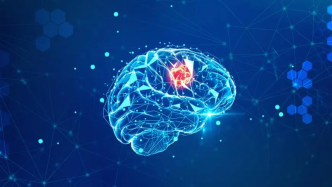
On September 15, an article jointly signed by 124 scholars and published on the preprint platform PsyArXiv caused an uproar in the scientific community.
This article points out that Integrated Information Theory (IIT) is pseudoscience.
What is IIT? According to "Nature", IIT was proposed by Giulio Tononi, a neuroscientist at the University of Wisconsin, in 2004. It is a theory that describes what makes someone or something conscious. It is one of the core theories for understanding consciousness. The theory proposes that consciousness arises from the processing of information by a "system" similar to a network of neurons or computer circuits, and that more interconnected or integrated systems produce higher levels of consciousness.
Hakwan Lau, a neuroscientist at the RIKEN Brain Science Research Center in Japan and one of the authors of the article, pointed out that some researchers in the field of consciousness believe that there is a discrepancy between the scientific value of IIT and its vigorous publicity in the mass media.
“Did IIT become a mainstream theory because academics first accepted it, or did the media hype force academics to acknowledge it?” Lau said.
The reason why Lau et al. published this article stems from the results of an adversarial study on IIT and global neuron workspace theory (GNW) reported by Nature and others. The study led some researchers to find problems with IIT's positing as a leading theory of the realm of consciousness.
Regarding labeling IITs as pseudoscientific, Lau explained that a "common sense definition" is "not supported by science, but it is disguised as if it has been scientifically established." From this level, it is not too much to label IIT as pseudoscience.
Lau hopes their article will benefit young researchers, policymakers, journal editors and research funders, who are all easily swayed by the media.
The publication of this article sparked a series of debates. For example, although neuroscientist Anil Seth, director of the Center for Consciousness Science at the University of Sussex in the UK, is not a supporter of IIT, he believes that describing IIT as pseudoscience is extremely inflammatory, and he does not agree with labeling this theory pseudoscience. Scientific labels.
“Generally core claims are more difficult to test than other theories, but some predictions given by IIT, such as hypotheses about neural activity related to consciousness, can be tested. A 2022 review summarized 101 empirical studies involving IIT. "Seth analyzed.
"IIT is a theory, so there may be empirical errors." Christof Koch, a researcher at the Allen Institute for Brain Science in the United States and a supporter of the IIT theory, said that the assumptions given by the theory are very clear, such as that consciousness has a physical basis and It can be measured mathematically.
Liad Mudrik, a neuroscientist at Tel Aviv University in Israel who led the IIT versus GNW study, defended IIT’s testability at the neural level.
"Many people in the field don't like IIT, and that's OK. But it's not clear to me what the basis is for claiming it's not one of the mainstream theories," Mudrik said.
Mudrik emphasized that she has great respect for the people who co-signed the article, some of whom are even her close collaborators and friends, but she is concerned about the impact the article will have on the field of consciousness research.
“Consciousness research has struggled from its inception with skepticism to establish itself as a legitimate scientific field. In my opinion, the best way to combat these skepticism is to conduct excellent and rigorous research rather than publicize someone’s Certain ideas," Mudrik said.
Some researchers worry that the article may hinder the development of other theories in the field of consciousness. Someone may make their research hypothesis trivial and banal in order to avoid being labeled as pseudoscientific.
Related paper information: https://doi.org/10.31234/osf.io/zsr78
(Original title: "Scientist publishes article saying that comprehensive information theory is "pseudoscience"")